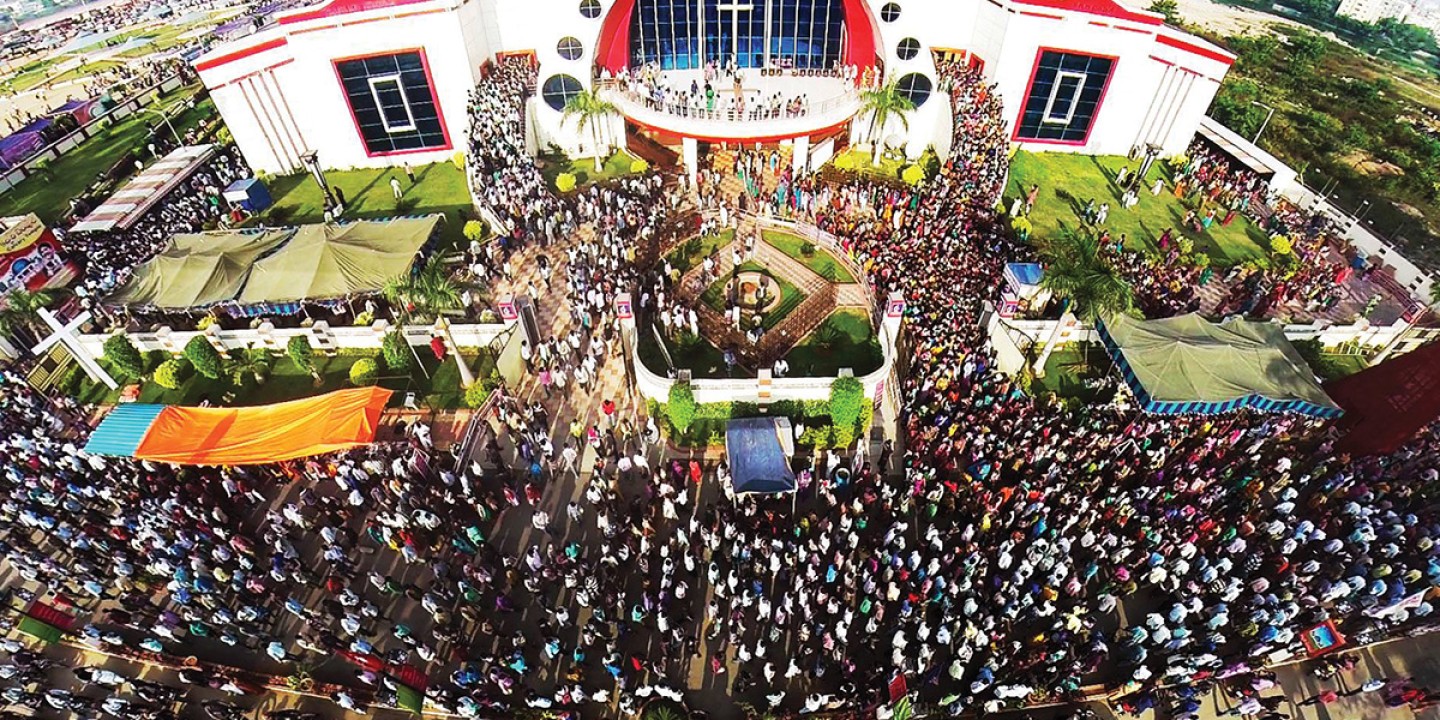A vibrant Christianity in South India
Despite the government’s desire to eliminate non-Hindu faiths, churches thrive in the nation’s diverse south.

For anyone interested in the state of global Christianity, India represents a real anomaly. With around 40 or 45 million believers, Indian Christians constitute a tiny proportion of that country’s vast population, perhaps just 3.5 percent of the whole. Realistically, nobody expects that India is on the verge of a mass Christian conversion. At the same time, India is so large that its Christian population is comparable in scale to those of the largest European nations, and levels of practice are significantly higher. In recent decades, some of the local stories of growth have been explosive—especially in India’s southern states.
In recent years, India’s right-wing national governments have presented a vision of the country that is strikingly homogeneous, in which the true or real nation is both faithfully Hindu and Hindi-speaking. Little room is left for such minority believers as Muslims or Christians, however long they might have lived on Indian soil. For many years, the Indian national census has consistently underestimated the number of religious minorities, often grossly.
Read our latest issue or browse back issues.
This intolerant vision is hard to sustain in the south, where most people speak one of the tongues from the Dravidian language family, such as Telugu, Tamil, Kannada, and Malayalam, and where ethnic and religious diversity is a basic fact of daily life. In southern states like Telangana or Karnataka, Hindus definitely predominate among religious believers, but the Hindi language is spoken by only 1 or 2 percent of the people. Christians are strongest in such southern states as Kerala and Tamil Nadu, where some churches can plausibly trace their spiritual ancestry to apostolic times. Newer evangelical or charismatic congregations are obvious in the booming high-tech centers of Bengaluru, Hyderabad, and Chennai, all of which count among the nation’s largest and most globalized urban communities.
The Christian presence is apparent in Hyderabad (in Telangana), with its mighty industries in pharmaceuticals and biotech. Hyderabad is the home of Calvary Temple, which claims to be the world’s second-largest evangelical megachurch. Calvary boasts an astonishing record of growth, from a few dozen followers at its inception in 2005 to more than 300,000 today. In 2020, the church managed to accommodate 50,000 worshipers at a single service. As always in such cases, we can quibble about exact numbers, as different churches vary in how they define members and how they collect statistics. But beyond argument, Calvary has been a phenomenal success, largely due to the energy of its charismatic founder, Satish Kumar.
While Calvary stands out for its enormous scale, megachurches are a well-known feature of southern India’s religious landscape. Just as detached from the national government’s vision of a Hindu/Hindi monolith is Chennai, in Tamil Nadu. This is the great city formerly known as Madras but renamed Chennai in a quest for greater Indian authenticity. I claim no scientific validity for this observation, but my own informal encounters suggest that natives usually still call it Madras, while I have heard the name change blamed on “those bloody people up north.” I have heard similar complaints from residents of the former Bangalore, which is now Bengaluru.
Whatever we may call it, Chennai also has its great churches of recent mushroom growth. The New Life Assembly of God Church was founded in 1973 by David Mohan, and it is currently home to 40,000 members. Bengaluru (in Karnataka) is home to two impressive Assemblies of God megachurches, Full Gospel and Bethel. Each claims a membership of around 20,000. Both Chennai and Bengaluru also count other Pentecostal-inclined megachurches, although each with “only” a few thousand followers apiece.
However awe-inspiring these Pentecostal congregations might appear, they are by no means the whole of the picture. Older, established churches of many shades and denominations feature prominently among the south’s religious landscape, including the venerable buildings and village churches of the Thomas Christians, with later Catholic and Anglican foundations. The huge Marian healing shrine at Velankanni (in Tamil Nadu) is operated by the Roman Catholic Church, but pilgrims and visitors might be from any Christian tradition, along with many Hindus and Muslims. The year’s main pilgrimage event in September customarily draws 3 million.
Adding to the impact of these diverse Indian Christian congregations is their overseas outreach. Over the past half century, southern Indians in particular flocked to the wealthy lands of the Persian Gulf, where in due course they were allowed to build their own churches and cathedrals. No less striking have been the revivals and miracle crusades launched by Indian pastors in the Gulf, under the strict condition that they make no attempt to proselytize among local Muslims. Other migrants traveled to Europe, where they have participated enthusiastically in local churches. In 2021, the Church of England appointed a new bishop for the See of Loughborough, a man born and raised in Bengaluru.
Any map of the key centers of global Christianity has to pay full attention to India’s thriving south.
A version of this article appears in the print edition under the title “South India’s thriving churches.”






